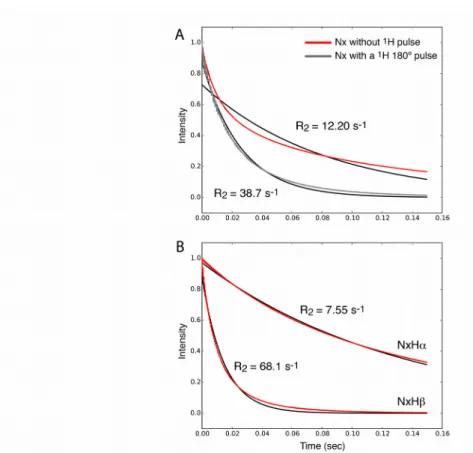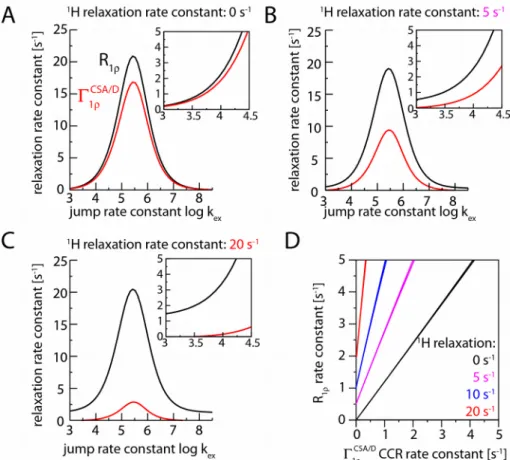Cross-Correlated Relaxation of Dipolar Coupling and Chemical-Shift Anisotropy in Magic-Angle Spinning R 1ρ NMR Measurements: Application to Protein Backbone Dynamics Measurements
Texte intégral
Figure



Documents relatifs
In this work we analyze the temperature dependence of cross-correlated re- laxation rates arising from correlated fluctuations of two N - H N dipole-dipole
Abstract The measurements of cross-correlated relaxa- tion rates between H N –N and C b –C c intraresidual and sequential dipolar interactions is demonstrated in ASN, ASP and
F. HARTMANN-BOUTRON Laboratoire de Spectrometrie Physique U. — Nous présentons ici quelques résultats récents relatifs au traitement de la relaxa- tion par des méthodes
At a constant temperature, the time dependence of the recovery of the magnetization is found to change from exponential behavior, for tipping-angles smaller than €Ic, to
(This effect is also very slightly enhanced by a subtle interplay between depolarization and frequency shift: the depolarization at large gradients acts differently upon the
Optic nerve and/or chiasmal dysfunction typically occur 2 to 5 months after drug initiation though occasional patients experience visual loss much earlier, within weeks or even days
So, even though Hick ’s theory of religion uses rhetoric that is different from traditional Islamic rhetoric, this study will proceed on the basis that this need not necessarily be
On constate que l’indice de réfraction des couches minces d’oxyde de titane augmente en fonction de l’augmentation de la température de recuit et du nombre de trempages d’une